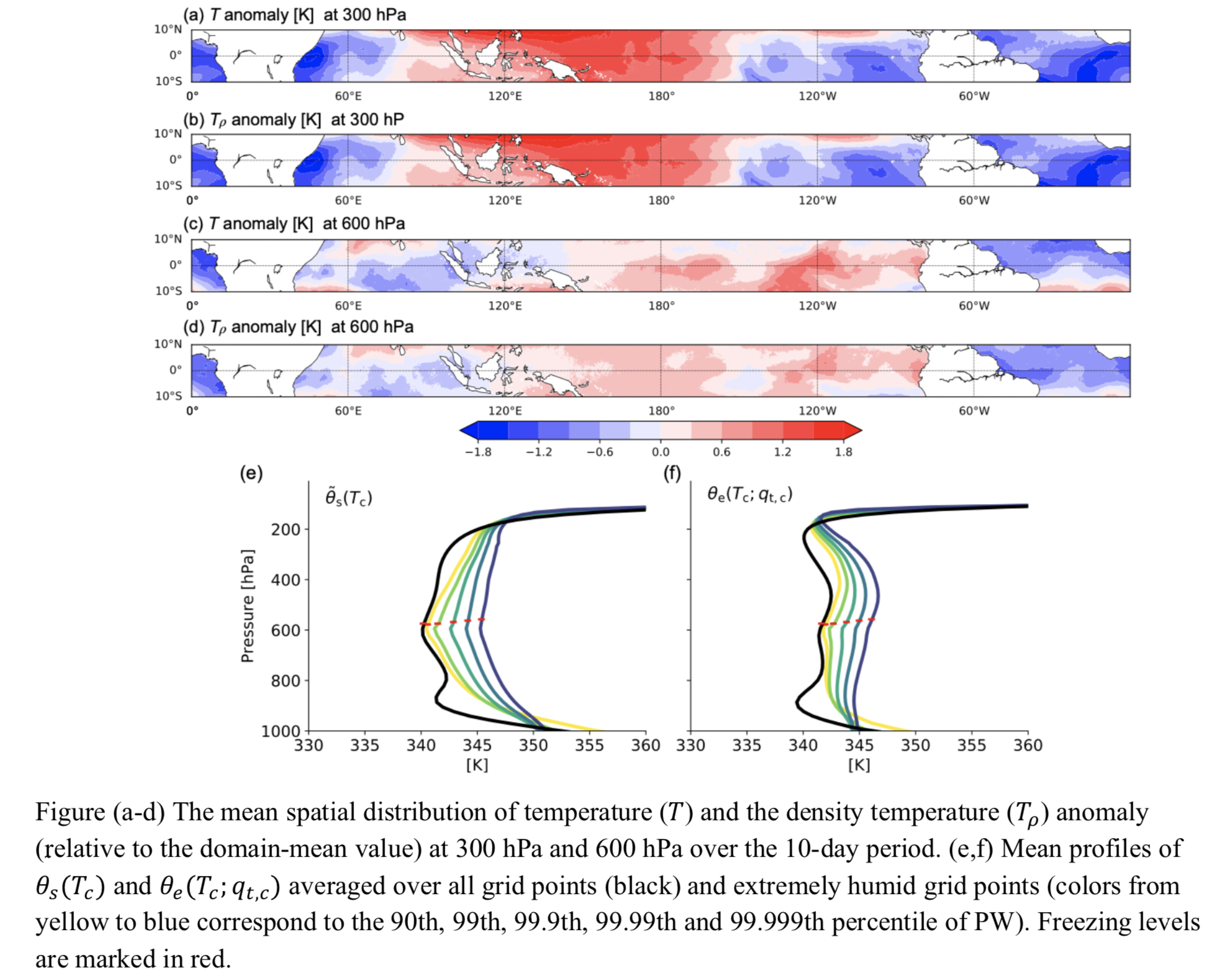Graphical Abstract
Bao, J. and B. Stevens, 2021: The elements of the thermodynamic structure of the tropical atmosphere. J. Meteor. Soc. Japan, 99, 1483-1499.
Special Edition on DYAMOND: The DYnamics of the Atmospheric general circulation Modeled On Non-hydrostatic Domains
https://doi.org/10.2151/jmsj.2021-072
Graphical Abstract
Published
Plain Language Summary:
The two foundations of the tropical atmosphere are that the horizontal temperature in the free troposphere is homogeneous, and the vertical structure follows a moist-adiabatic lapse rate. This study uses simulations from global storm-resolving models to investigate the accuracy of these ideas. Our results show that horizontally the density temperature appears to be homogeneous, but only in the mid- and lower troposphere. Vertically, the tropical atmosphere in saturated convective regions tends to be isentropic (condensed water remaining in the updraft) below the freezing level and pseudo-adiabatic (condensed water/rain falling immediately upon formation) above. However, the tropical mean temperature is substantially colder than that in saturated convective regions because of the impact of entrainment, a process that the saturated air mixes with dry environment, in the lower troposphere.
Highlights:
- Horizontally the density temperature appears to be homogeneous, but only in the mid- and lower troposphere (between 400 hPa and 800 hPa). Therefore, water vapor plays an important role in the horizontal absolute temperature distribution.
- The tropical atmosphere in saturated convective regions tends to adopt a thermal structure that is isentropic below the zero-degree isotherm and pseudo-adiabatic above.
- The tropical mean temperature is substantially colder, and is set by the bulk of convection which is affected by entrainment in the lower troposphere.







